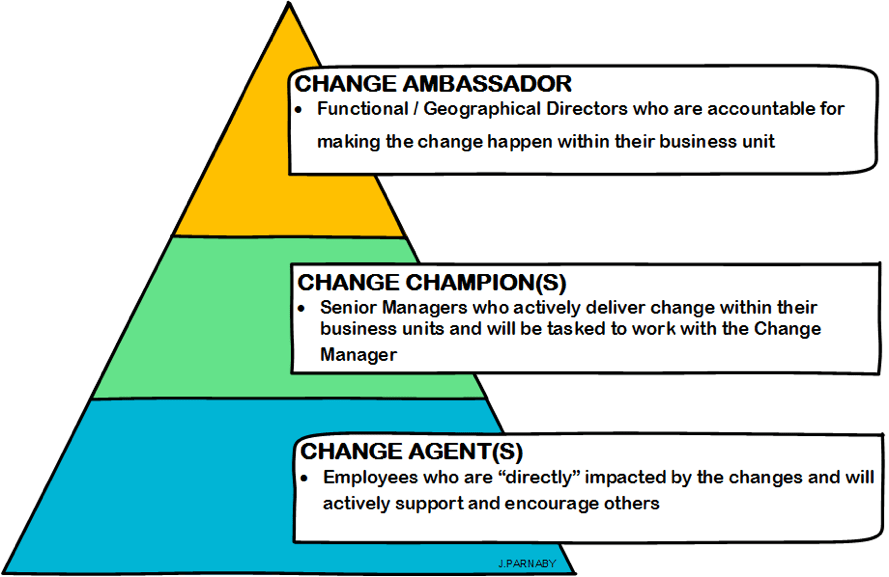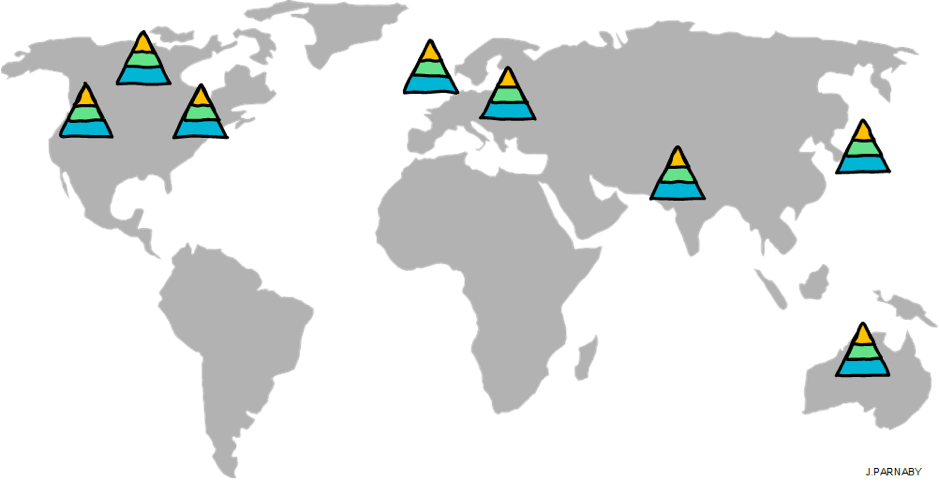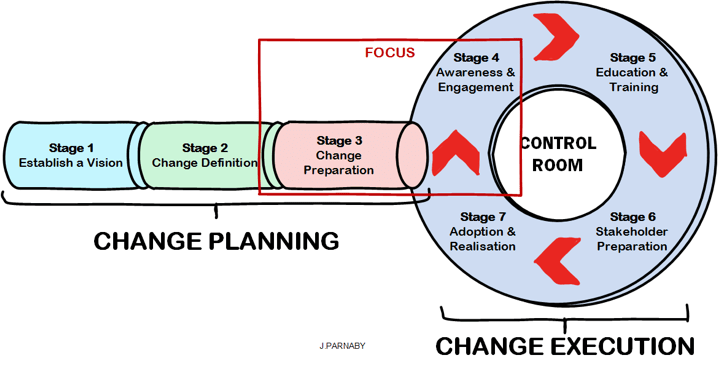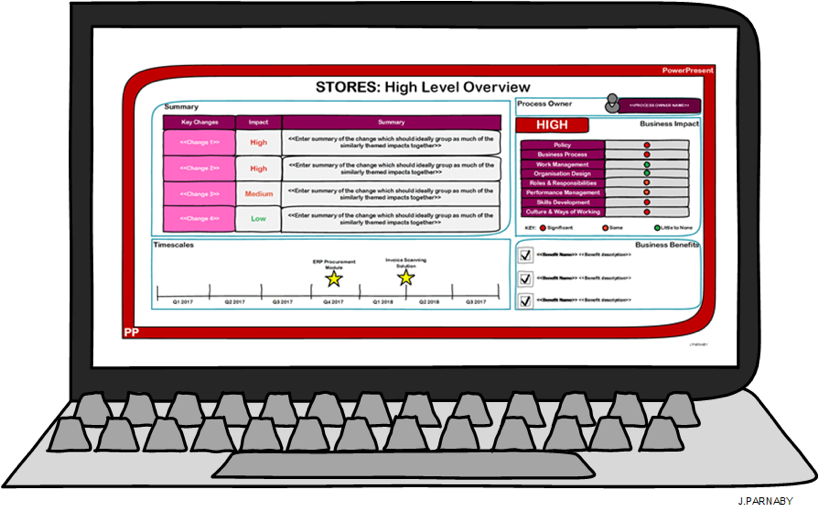“You can’t do this on your own”
The phrase “analysis paralysis” is probably springing to mind if you’ve been spending days capturing and logging change impacts, reviewing them time and time again and producing change impact assessments. However, at this stage, the Change Team should have a complete holistic view of the change(s) which is going to impact the organisation and what they mean for the various stakeholder groups. Once you have completed the upfront change definition you should have a nagging feeling telling you to stop analysing and start preparing, better still, start or continue engaging with the business. Where do you start? Who’s going to help? Who has already been informed of these changes? How are you going to get parts of the business that aren’t geographically close to you involved?
After reading quite a few Change Management books, the Change Network concept appears multiple times, I think we all know that it’s vital to get the business involved to make change stick. Imagine somebody turning up on your doorstep saying “You’ve got to move house in 2 weeks, trust me it’s a lot better than where you are now, here are the keys and good luck”, you’re probably going to have more questions than answers or worse still you might not believe it and not do anything at all.
If the change definition steps are the “head” of change management, then the change network is the “heart”. Going back to the change framework example I explored in episode one, this primarily sits in Stage 3 – Change Preparation, however, it also straddles into Stage 4 as part of the Change Execution phase. This is simply because without the network you’ll have a limited feedback mechanism to truly understand whether your change plans are going to be effective or not.
So, going back to practical applications I’ll demonstrate how I’ve organised and built change networks in the past. I tend to build my networks in a hierarchy of 3 levels as highlighted by the image below but this will completely depend on the size and complexity of the organisation.

- Change Ambassadors – The good news here is that these people already exist in your organisation as they tend to be the Directors / Heads of Departments. The rule is that typically there should be one Change Ambassador for each business unit who can provide change and leadership support to their teams. Quite simply put, these people are accountable for making the changes happen within their business unit and without their involvement and support your change effort is in for a rocky road. In your plans, you’ll need to invest a lot of time preparing and using the Change Impact Assessment outlined in episode three, to outline the changes concisely and remember, getting time with senior stakeholders can be tricky so plan wisely.
Make sure you have your Change Impact Assessment ready as a stakeholder engagement aid
- Change Champions – These individuals should be identified and formally nominated by the Ambassadors and not the programme team or change manager. This is important because it’s all about ownership of the change; the business needs to be empowered by the Change Ambassadors to be able to first understand the change impacts in detail and more importantly what needs to happen in their business unit to adopt the changes. The Change Champions will be the core active members of the Control Room which is the formal conduit between the programme and business and will provide the barometer on whether change preparations are successful or not. I will cover what control rooms are in much more detail in episode six.
- Change Agents – These will be people who are directly impacted by the change and these individuals would ideally need to be identified by the Change Champions. If the business is quite dispersed, then potentially you may need Change Agents based across all your sites/stores. Their role is to support the Change Champions in creating an environment for change to happen, providing honest feedback and help to relay communications to various colleagues.
Depending on the level of change and how your business is structured then it’s not uncommon to have multiple change networks. For example, an ERP implementation could impact most of the departments in an organisation in different ways so you may need a network per department. It could be that two companies are merging together which have sites internationally so again these networks might need to be created by country, region or even city. Think carefully about how to get the best spread across the organisation. If resources are constrained then using your change impact assessment covers the major/high impacted areas as best as you can.

It’s worth noting the amount of time it takes to build these networks, the answer being more time than you think. Ok that answer was quite vague but it depends on several things:
- How many changes are being delivered at any one time?
- How geographically spread the business is (regional, national, international)?
- How complex the organisation is?
Once the network has been established I would recommend that the Change Champions are formally inducted which means investing the programme teams’ time in meeting with them, explaining the goals and deliverables of the projects but more importantly bringing to life those change impacts that you’ve logged earlier.
How do you build your change networks? What has worked for you in the past? As always please feel free to leave a comment below to engage with the transformation community.
This article is brought to you exclusively by The Business Transformation Network.







